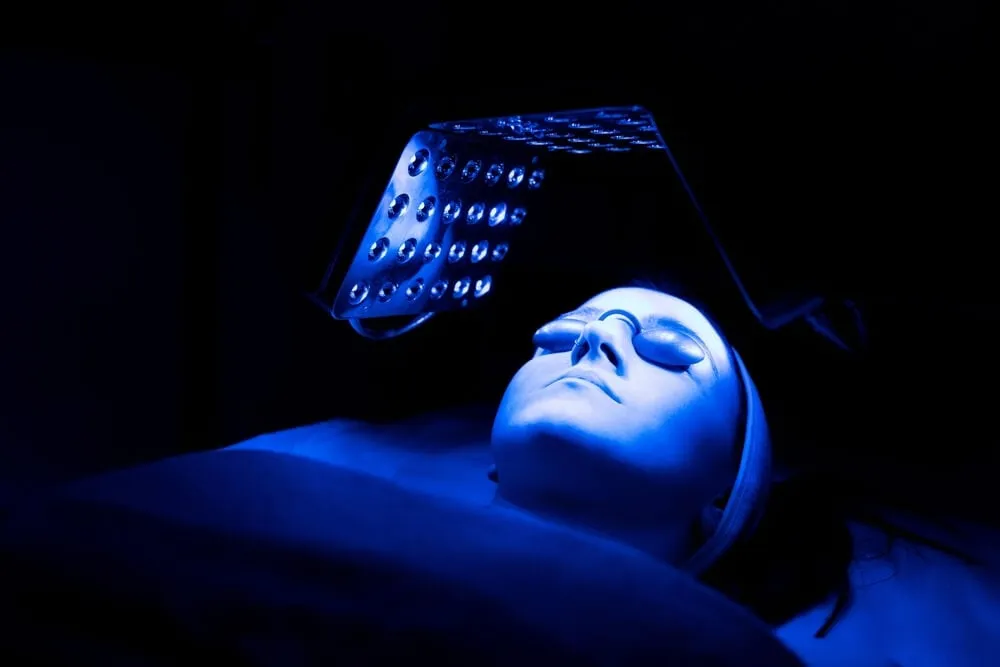Can Blue Light Therapy Improve or Disrupt Your Sleep Cycle?

In today's digital age, many people are turning to blue light therapy to address various health issues, including sleep disorders. However, understanding its impact on our sleep cycles is crucial. This blog post delves into the science behind blue light therapy, its benefits, risks, and guidelines for safe usage, helping you determine if it can improve or disrupt your sleep cycle.
Section 1: What is Blue Light Therapy?
Blue light therapy is a treatment that involves exposure to specific wavelengths of blue light, typically through a lightbox or specialized lamp. Originally developed to treat Seasonal Affective Disorder (SAD), it has expanded to address a range of conditions, including depression, circadian rhythm disorders, and certain skin conditions.
The technology behind blue light therapy involves emitting light at a wavelength of around 480 nm, which is thought to influence the body's biological clock and affect hormone production related to sleep and wakefulness.
Section 2: The Science Behind Blue Light and Sleep Cycles
Blue light plays a significant role in regulating the circadian rhythm, the body's internal clock that dictates sleep-wake cycles. Exposure to blue light, especially during the day, can help maintain a healthy circadian rhythm by boosting alertness and mood. However, excessive exposure, particularly at night, can suppress the production of melatonin, a hormone that promotes sleep.
Studies have shown that blue light exposure in the evening can delay sleep onset, reduce sleep quality, and disrupt overall sleep patterns. For instance, a study published in the Journal of Clinical Sleep Medicine found that participants exposed to blue light before bedtime experienced significant delays in their sleep phase and reduced melatonin levels compared to those exposed to dim light .
Section 3: Benefits of Blue Light Therapy
Despite the potential risks, blue light therapy can offer several benefits when used correctly. It is particularly effective in treating circadian rhythm sleep disorders, such as Delayed Sleep Phase Disorder (DSPD) and non-24-hour sleep-wake disorder. By providing timed exposure to blue light, individuals can shift their sleep-wake cycles to more desirable patterns.
For instance, a case study of a patient with DSPD showed that regular use of blue light therapy in the morning helped advance their sleep phase, resulting in improved sleep quality and daytime functioning .
Section 4: Potential Risks and Disruptions
While blue light therapy can be beneficial, it also carries potential risks, especially if misused. Overexposure or improper timing can lead to disruptions in sleep, making it harder to fall asleep and reducing overall sleep quality. Individuals with certain conditions, such as bipolar disorder, may experience exacerbated symptoms when using blue light therapy, as it can trigger manic episodes .
Moreover, those who are particularly sensitive to light or have existing eye conditions should consult with a healthcare provider before starting blue light therapy, as it can cause eye strain or discomfort.
Section 5: Tips for Safe and Effective Use
To maximize the benefits of blue light therapy while minimizing risks, consider the following guidelines:
- Timing: Use blue light therapy in the morning to help reset your circadian rhythm and avoid exposure in the evening to prevent disruption of melatonin production.
- Duration: Limit sessions to 20-30 minutes, starting with shorter durations and gradually increasing as needed.
- Intensity: Ensure the lightbox emits at least 10,000 lux of light, but consult a healthcare provider to determine the appropriate intensity for your needs.
- Distance: Position the lightbox at a safe distance, typically about 16-24 inches from your face, without staring directly into the light.
- Consistency: Use the therapy consistently at the same time each day to establish a regular sleep-wake cycle.
For those looking for alternatives, consider practices such as maintaining a regular sleep schedule, reducing screen time before bed, and using red or amber light at night, which has a lesser impact on melatonin production.
Conclusion
Blue light therapy holds promise for improving sleep in individuals with certain circadian rhythm disorders. However, its potential to disrupt sleep cycles should not be overlooked. By understanding the science behind blue light and following guidelines for safe use, you can harness its benefits while minimizing the risks. Ultimately, whether blue light therapy improves or disrupts your sleep cycle depends on how and when it is used.





